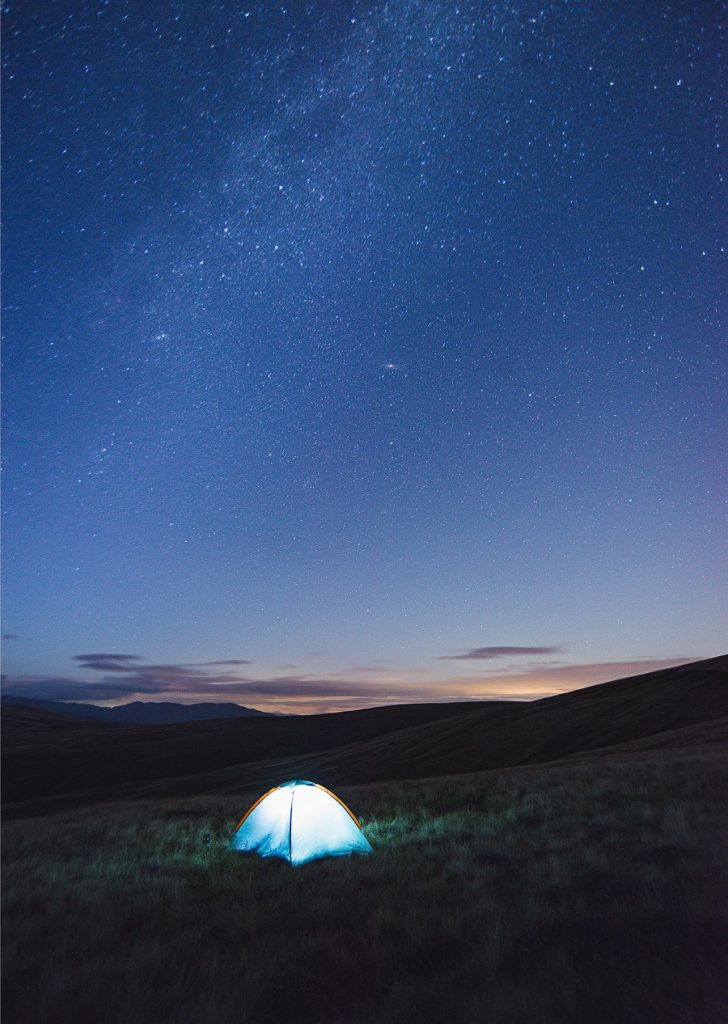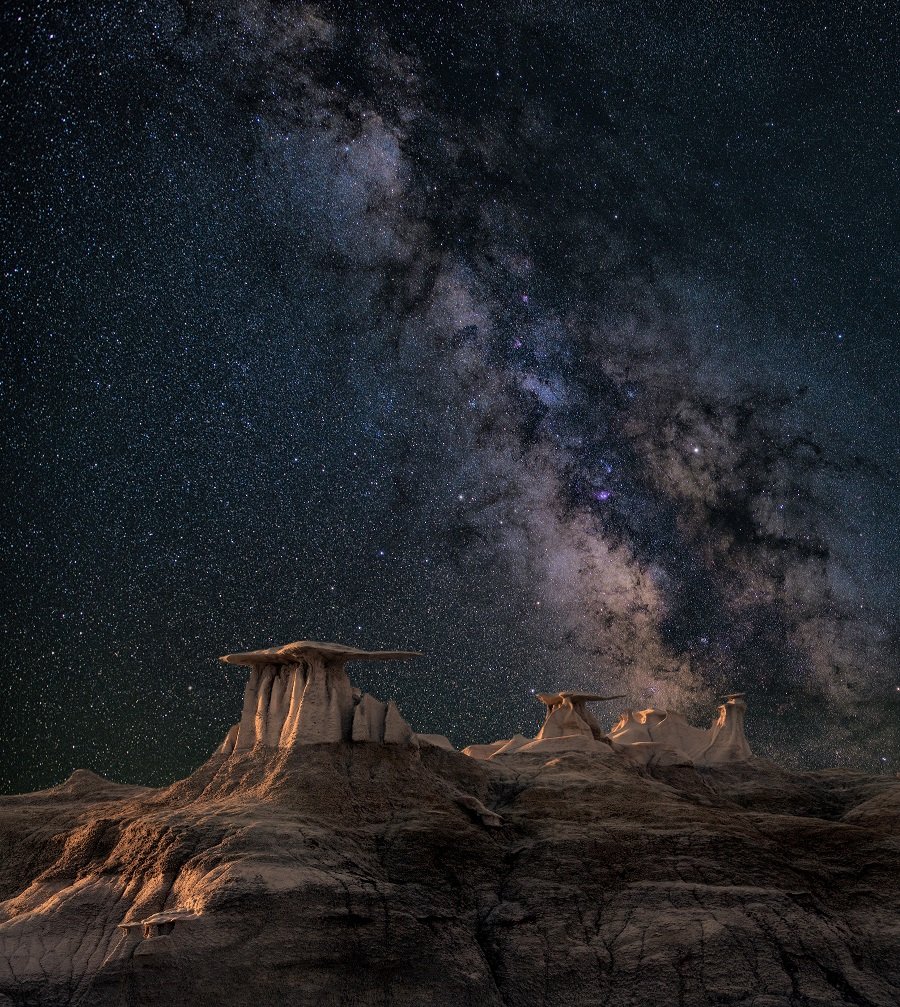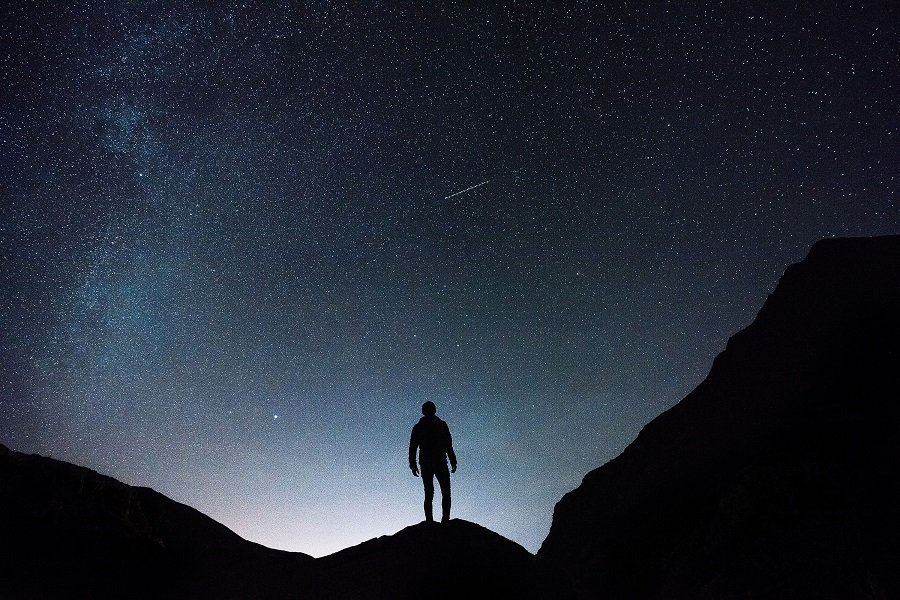The Best Lens for Astrophotography – What is it?
by Alex W.
Photography in general can quickly become a rabbit hole of sunken costs as the photographer strives for the very best in image quality, and in no genre is that more true than astrophotography. Gear is important in this genre, and using the best lens for astrophotography that you have available can make a huge difference to your images.
I'm a big believer in Ansel Adams' famous old quote:
" The most important component of a camera is twelve inches behind it."
Indeed, the skill, knowledge, and creativity of the photographer trumps all when it comes to photography, but sometimes even that isn't enough. In astrophotography you're trying to capture things that are almost invisible to the naked eye, and that means that you sometimes have to push your equipment to it's limits.
It goes without saying that the higher those limits are, the more options that become available to you. Simply put: The better your equipment is, the more potential you have to capture some truly stunning astrophotography.
All of your equipment is important in astrophotography, with everything from your remote shutter release to your camera body playing an important role. However, the lens you use is undoubtedly one of the biggest factors in how your image of the night sky turns out.
Here, we'll be discussing the options you have when it comes to selecting a lens for your astrophotography.
It doesn't matter whether you're shooting the night sky with a Canon, Nikon, Sony, or Fuji, we've got lens options for all of them!
Top Lens for Astrophotography What is It by Editors
- #PreviewProductRating
- Bestseller No. 1
- Bestseller No. 2
- Bestseller No. 3
- Bestseller No. 4
- Bestseller No. 5
- Bestseller No. 6
- Bestseller No. 7
- Bestseller No. 8
- Bestseller No. 9
- Bestseller No. 10
- Bestseller No. 11
- Bestseller No. 12
- Bestseller No. 13
- Bestseller No. 14
- Bestseller No. 15
Contents
- Top Lens for Astrophotography What is It by Editors
- Best Focal Length for Astrophotography
- Aperture in Astrophotography
- What to Look for in an Astrophotography Lens
- Best Prime Lenses for Astrophotography
- Best Zoom Lenses for Astrophotography
- Our Astrophotography Lens Recommendations
- Final Thoughts
- Read More…
You Might Like… Astrophotography - A Beginner's Guide to Improving Your Night Photography
Best Focal Length for Astrophotography

It's always difficult to recommend a 'best' of anything in a medium as fluid and creative as photography, but for astrophotography I do have some very strong recommendations.
One of these is focal length. If you're just starting out in astrophotography I strongly suggest that you look towards the wider end of the spectrum. It's very difficult to get a usable image of the night sky with telephoto lenses, and considering most photographers are aiming to show off as many stars as possible a wide-angle lens is a natural fit.
How wide though? Well, alongside your standard zoom lens (such as the 18-55mm on APS-C cameras and the 24-70mm on full frame cameras) I would recommend picking up a super wide prime lens. We've already discussed the benefits of using prime lenses, and all of these translate perfectly into astrophotography too. Especially the section on aperture.
In addition to being able to pick up a lens with a very wide aperture, you also want a shorter focal length to fit more of the beautiful night sky in. Not only that, but using the rule of 500 ( see here) you can use longer shutter speeds without causing the stars to trail.
All this being said, it is possible to get great astrophotography images with a longer focal length. For example, using a 50mm prime lens and shooting a series of images to stitch into a panorama is one way to do this.
Aperture in Astrophotography

As we know from the Exposure Triangle, the wider the aperture in your lens the more light it will let through to the sensor.
In a field where you need as much light as possible, but also constrained on shutter speed due to star trailing, this ability to open your aperture up is incredibly useful.
This is an area where prime lenses shine. You can pick up a wide angle prime lens with a wide aperture for peanuts compared to their zoom equivalents, which at least takes some of the cost out of a potentially expensive hobby!
Simply taking the f/number doesn't tell the whole story though. There's also the clear aperture size to consider. This is a physical measurement of the lens opening. Warning: Numbers coming up.
So, the clear aperture size is the aperture size divided by the focal length of the lens. The higher the result, the better our signal to noise ratio, which results in overall better image quality. Let's take a look at a couple of examples:
- 50mm f/1.8 lens has a clear aperture of 27.7mm (50 / 1.8 = 27.7).
- 14mm f/2.8 lens has a clear aperture of 5mm.
- 24mm f/1.8 lens has a clear aperture of 13.3mm.
What does this mean?
Lenses with a bigger clear aperture will gather more light from the same portion of sky, on account of their physically larger aperture. This results in more detail being captured.
However, the trade off comes when you have to start shortening exposure times due to the longer focal length. For example, the 50mm lens above can only realistically go to 10 seconds exposure time on a full frame camera, whereas a 14mm f/2.8 lens can go up to 36 seconds.
The result? The 14mm f/2.8 is a slightly better lens for astrophotography than the 50mm f/1.8.
You just need to remember that picking a lens is all about the tradeoff between clear aperture, focal length (and therefore exposure time), and image quality.
What to Look for in an Astrophotography Lens

So, by looking into the previous two sections we know that the best starter lens for astrophotography is a relatively wide-angle lens with as big a clear aperture as possible.
That's narrowed it down significantly, but there are still plenty of options to consider. Let's take a look at some of the best lens options on offer:
Note: The below links are affiliate links, meaning that if you buy the product using one of these links I will receive a small commission. There is no additional charge to you, but the commission from these links help with the running costs of this website and allow me to continue providing free tutorials and guides.
You Might Like… Best Lenses for Landscape Photography
Best Prime Lenses for Astrophotography - The Cheaper Option
Rokinon / Samyang 14mm f/2.8 IF ED UMC
-
Rokinon FE14M-C 14mm F2.8 Ultra Wide Lens for Canon (Black)
- Ultra wide-angle 14mm lens with an approximately 90° angle of view using an APS-C camera, for dramatic effects
- Lens has a minimum focusing distance of 0.9' (28 cm) for enhanced close-up shots. Lens includes a built-in petal-type lens hood.Do not soak the lens in water, and avoid water splashing onto the lens
Lens Mount Availability - Nikon, Sony E Mount, Samsung NX, Pentax KAF, Sony A, Canon EOS, Sony Alpha, Minolta AF, Olympus 4/3rds, Pentax K SMC-F, Canon EF, Sony FE
Max Shutter Speed (using Rule of 500) - 35 seconds
Autofocus - No
Full Frame Compatible - Yes
Clear Aperture Size - 5mm
Irix 15mm f/2.4 (Blackstone or Firefly)
-
Irix Firefly 15mm f/2.4-22 Ultra Wide Angle Lens with...
- Neutrino coating for minimum ghosting, CA and flare
- Features built-in chip for auto metering with Canon DSLR cameras
Lens Mount Availability - Nikon F, Canon EF, Pentax K
Max Shutter Speed (using Rule of 500) - 33 seconds
Autofocus - No
Full Frame Compatible - Yes
Clear Aperture Size - 6.25mm
Sigma 20mm f/1.4 DG HSM
Lens Mount Availability - Nikon F, Sigma SA, Canon EF, Sony E
Max Shutter Speed (using Rule of 500) - 25 seconds
Autofocus - Yes
Full Frame Compatible - Yes
Clear Aperture Size - 14.3mm
Rokinon / Samyang 24mm f/1.4 ED AS UMC
-
Rokinon 24mm F/1.4 Aspherical Wide Angle Lens for Canon...
- Aperture range of f/14 ~22; Manual Focus Maximum Diameter: 330"(83mm), Length: 384"(975mm)
- Constructed of 13 elements in 12 groups (2 apspherical lenses)
Lens Mount Availability - Nikon F, Sony E, Samsung NX, Pentax KAF, Sony A, CAnon EOS, Sony Alpha, Minolta AF, Olympus 4/3rds, Pentax K SMC-F, Canon EF, Sony FE
Max Shutter Speed (using Rule of 500) - 20 seconds
Autofocus - No
Full Frame Compatible - Yes
Clear Aperture Size - 17.1mm
Best Zoom Lenses for Astrophotography - Feeling Flush?
Tamron 15-30mm f/2.8 Di VC USD
-
Tamron AFA012N700 SP 15-30mm f/2.8 Di VC USD Wide-Angle Lens...
- Vibration Compensation for sharper images
- Maximum diameter: 98.4mm.Minimum Focus Distance : 11 in(028m), Focal Length : 15-30 mm
Lens Mount Availability - Nikon F, Canon EF, Sony A
Max Shutter Speed (using Rule of 500) - 33 seconds
Autofocus - Yes
Full Frame Compatible - Yes
Tokina AT-X 11-16mm f/2.8 DXII
-
Tokina AT-X 116 PRO DX-II 11-16mm f/2.8 Lens for Canon Mount
- USA Version. 3 Year Tokina Warranty included. Intended for sale within the USA.
- Aperture Range: f/2.8 to f/22 Designed for Cameras with APS-C Sensors.
Lens Mount Availability - Nikon F, Canon EF, Sony Alpha
Max Shutter Speed (using Rule of 500) - 29 seconds
Autofocus - Yes
Full Frame Compatible - No
Nikon 14-24mm f/2.8 ED
-
Nikon AF-S NIKKOR 14-24mm f/2.8G ED
- Focal Length Range: 14 -24 millimeter
- Minimum focus distance 0.9 feet. (0.28 meter), minimum f/stop 22
Lens Mount Availability - Nikon F
Max Shutter Speed (using Rule of 500) - 35 seconds
Autofocus - Yes
Full Frame Compatible - Yes
Canon EF 16-35mm f/2.8L II USM
-
Canon EF 16-35mm f/2.8L ll USM Zoom Lens for Canon EF...
- 16 35mm ultra wide angle zoom lens with f/2.8 maximum aperture
- 3 high precision aspherical lens elements produce superior image quality, Closest focusing distance: 0.92 feet
Lens Mount Availability - Canon EF
Max Shutter Speed (using Rule of 500) - 31 seconds
Autofocus - Yes
Full Frame Compatible - Yes
Our Astrophotography Lens Recommendations
Deciding which lens to actually purchase depends a lot on your situation. Do you have a large budget or are you looking for a more wallet friendly solution? Is autofocus important to you? Could you kill two birds with one stone and buy a lens to use in other areas of your photography as well?
Hopefully the list below should lead you in the right direction:
Best Budget Lens for Astrophotography - Rokinon / Samyang 14mm f/2.8 IF ED UMC
Best Zoom Lens for Astrophotography - Tamron 15-30mm f/2.8 Di VC USD
Best Mid-Range Astrophotography Lens - Irix 15mm f/2.4 Blackstone
Overall Best Lens for Astrophotography - Rokinon / Samyang 24mm f/1.4 Aspherical
That's right, our overall winner isn't the most expensive lens! The Rokinon 24mm f/1.4 offers better image quality than its 14mm f/2.8 little brother, as well as a wider aperture. In addition, the clear aperture is impressively large at just over 17mm, while retaining a short enough focal length for a 20 second exposure.
This lens is absolutely the best balance between image quality, astrophotography suitability, and affordability.
Final Thoughts
Astrophotography is a genre of photography that can be taken as far as your wallet allows. The sky is the limit, literally.
You can spend tens of thousands of dollars on telescopes, adaptors, star trackers, and all manner of things and delve into an entire new subset of photography. Buying a more suitable lens could be all you ever need to fulfil your astrophotography ambitions, and as you can see it can be done on a rather modest budget if you're willing to make some small sacrifices.
If you're left wanting more though, sign up to our email list here. We've got an exciting project in the making that can banish those pesky shutter speed restrictions and allow you to further improve the quality of your images. To make matters even better, it's something that will cost you less than a meal out!
Read More…
The Ultimate Guide to Waterfall Photography
DSLR or Mirrorless - Which System Works for You?
5 Must Buy Lenses for Your Nikon DSLR
Best Cameras for Landscape Photography
 |
 |
 |
 |

About Alex W.
Alex is the owner and lead writer for Click and Learn Photography. An avid landscape, equine, and pet photographer living and working in the beautiful Lake District, UK, Alex has had his work featured in a number of high profile publications, including the Take a View Landscape Photographer of the Year, Outdoor Photographer of the Year, and Amateur Photographer Magazine.
Thoughts on "The Best Lens for Astrophotography – What is it?"
 |
 |
 |
 |
Learn Photography
You can Get FREE Gifts. Furthermore, Free Items here. Disable Ad Blocker to receive them all.
Once done, hit anything below
 |
 |
 |
 |





















